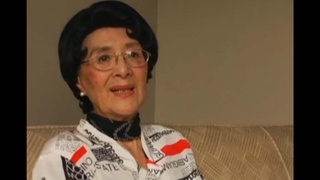Entrevistas
Yoshitaro Amano chose the Chancay culture (Japanese)
(Japanese) Amano chose the Chancay, I think, just by chance. Traveling on his own, he visited the valley called Chancay. When he arrived at the valley, he found some earthenware and an enormous amount of textiles that had been excavated from a nearby site. Amano was Japanese, of course, and he had a greater appreciation for textiles than would Europeans. Well, it might have been Amano’s individual disposition, I don’t know. He was very impressed by the excellence of those textiles so he started looking into the Chancay culture.
Surprisingly, there weren’t any researchers studying the Chancay seriously. Okay, I might be overstating it a bit - there may have been one or two exceptions - but you could say that almost no one had an interest or concern for the Chancay. So, if somebody had already studied the Chancay, Amano would have been in second place. But Amano found out that there wasn’t anyone seriously studying the Chancay; there wasn’t anyone with a collection. Plus that location had relatively good access to Lima. With all things considered, he really felt this was a gift from heaven and it was meant to be a primary theme in his life. So the Chancay culture, the culture of one particular area, had been ignored in Peruvian academia until then. Amano immersed himself in research for almost thirty years, until he passed away. The collection he acquired became the basis for the Amano Museum.
Data: May 7, 2007
Localização Geográfica: California, US
Entrevistado: Yoko Nishimura
País: Watase Media Arts Center, Japanese American National Museum


